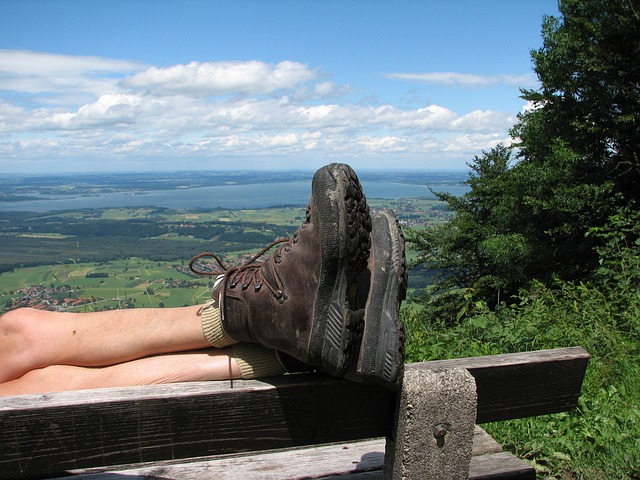When it comes to hiking, having the right gear is crucial to a safe and enjoyable experience. One of the most important pieces of gear for any hiker is a good pair of hiking boots. But how do you know if your hiking boots fit properly?
In this article, I will discuss the importance of properly fitting hiking boots and provide tips and advice on how to find the right fit. As a hiking expert, I have years of experience on the trail and have gone through my fair share of hiking boots and I know what works and what doesn’t. By the end of this article, you’ll have the knowledge to ensure your hiking boots fit well and are ready to take on any trail.
The Importance of Properly Fitting Hiking Boots
A poorly fitting pair of hiking boots can quickly turn a great hike into a painful and uncomfortable experience. Ill-fitting boots can cause blisters, hot spots, and even more serious injuries such as ankle sprains or twisted knees. In addition to the discomfort, a poorly fitting boot can also affect your performance on the trail, as you’ll be more focused on the discomfort and less on the beauty of the outdoors.
On the other hand, properly fitting hiking boots provide a comfortable and secure fit, allowing you to focus on your hike and enjoy your time outdoors. A good pair of boots will provide support for your feet and ankles, reduce the likelihood of blisters, and help to prevent injuries.
In short, the importance of properly fitting hiking boots cannot be overstated. It’s essential to take the time to find a pair of boots that fit well and provide the support you need on the trail.
How to Measure Your Foot
Before you can find the perfect pair of hiking boots, it’s important to accurately measure your foot. Here are some tips to help you get the most accurate measurements:
- Measure your foot in the afternoon or evening when your feet are naturally a little larger due to swelling that occurs throughout the day.
- Wear the socks you plan on wearing while hiking.
- Stand on a piece of paper and trace around your foot with a pencil or pen. Make sure the pencil or pen is held vertically and close to the foot.
- Measure the distance from the heel to the longest toe in centimeters. This is your foot length.
- Measure the widest part of your foot in centimeters. This is your foot width.
- Repeat steps 3-5 for your other foot. Feet can vary in size, so it’s essential to measure both.
Once you have your foot length and width, you can use these measurements to determine the correct size of hiking boots for you. It’s important to note that different brands may have slightly different sizing, so it’s always best to refer to the manufacturer’s size chart for the most accurate fit.
Factors to Consider When Fitting Hiking Boots
When it comes to finding the right fit for your hiking boots, there are several factors to consider:
- Boot size: This is the most obvious factor to consider. Your hiking boots should be snug but not too tight, with enough room to wiggle your toes. It’s important to remember that your feet may swell throughout the day, so it’s best to try on boots in the afternoon or evening.
- Boot width: The width of your boot is just as important as the size. Your foot should fit comfortably in the boot without feeling cramped or pinched. Some boots come in different widths, so make sure to try on both regular and wide widths to see which feels best.
- Arch support: Hiking boots with proper arch support will help to prevent foot fatigue and provide added comfort on the trail. Look for boots with a contoured footbed or removable insole that can be replaced with custom orthotics if needed.
- Toe box: The toe box should provide enough room for your toes to move freely. You should be able to wiggle your toes without feeling cramped or uncomfortable.
- Heel cup: The heel cup should fit snugly without feeling tight or uncomfortable. Your heel should stay in place when walking, but there shouldn’t be any rubbing or slipping.
- Lacing system: The lacing system is an often overlooked but crucial aspect of a good fit. Look for boots with a secure and adjustable lacing system that allows you to adjust the fit for your foot shape.
It’s important to consider all of these factors when trying on hiking boots to find the best fit for you. A good fit will provide comfort, support, and protection for your feet while hiking.
Trying on Hiking Boots
Once you have measured your feet and considered the factors that go into finding the right fit for hiking boots, it’s time to try on some boots. Here are 8 tips to keep in mind:
- Try on boots at the end of the day when your feet are at their largest.
- Wear the socks you plan on wearing while hiking.
- Bring any custom orthotics you may use to make sure they fit comfortably in the boot.
- Try on both boots and walk around the store or area to get a feel for how they fit.
- Test the fit of the boot by walking up and down an incline or on uneven surfaces.
- Make sure there is enough room in the toe box to wiggle your toes, and that the heel cup fits snugly without any slipping or rubbing.
- Adjust the lacing system to ensure a secure and comfortable fit.
- If you have any concerns or questions about the fit, don’t be afraid to ask the salesperson for advice.
Remember that hiking boots may feel slightly different on the trail compared to trying them on in a store, so it’s important to break them in before any long hikes. If you experience any discomfort or pain while wearing the boots, it’s best to return them and keep searching for the right fit. A good pair of hiking boots is an investment in your hiking comfort and safety, so take the time to find the perfect fit.
Breaking in Hiking Boots
Breaking in hiking boots is an important step in ensuring a comfortable fit and preventing blisters or injuries on the trail. Here are some tips to help break in your hiking boots:
- Start by wearing your boots around the house or on short walks to allow your feet to adjust to the new fit.
- Gradually increase the length of your walks in the boots over time.
- Wear your hiking boots on day hikes or shorter hikes before taking them on longer trips.
- Use moleskin or other blister prevention products on any areas that feel uncomfortable or tight.
- If your boots feel too stiff or inflexible, try flexing the sole and upper by hand or walking on a flat surface with the boots to help break them in.
- If you experience any discomfort or pain while wearing the boots, take a break and try again later or adjust the fit if possible.
Remember that breaking in hiking boots takes time, so it’s important to be patient and take the necessary steps to ensure a comfortable fit. A properly broken-in pair of hiking boots will provide the support and protection you need on the trail, making your hiking experience more enjoyable and safer.
Maintenance and Care for Hiking Boots
Proper maintenance and care of your hiking boots will not only prolong their life but also help them perform at their best. Here are seven tips to help care for your hiking boots:
- Clean your boots after each use using a soft-bristled brush to remove any dirt or debris. Avoid using harsh chemicals or detergents as they can damage the leather or fabric.
- Allow your boots to dry completely before storing them. Stuff them with newspaper or use a boot dryer to speed up the drying process.
- Apply a waterproofing treatment to your boots to help protect them from the elements. Follow the manufacturer’s instructions for the best results.
- Condition your boots with a leather conditioner or oil to keep the leather soft and supple. This will also help to prevent cracking or splitting.
- Replace worn-out laces as they can affect the fit and support of the boot.
- Store your boots in a cool, dry place away from direct sunlight.
- Inspect your boots regularly for any signs of wear or damage, such as holes, tears, or loose stitching. Address any issues promptly to prevent further damage or potential safety hazards.
By taking the time to properly maintain and care for your hiking boots, you’ll not only extend their life but also ensure they perform at their best on the trail. A well-cared-for pair of hiking boots will provide the comfort, support, and protection you need to enjoy your hikes safely and comfortably.
Conclusion
Finding the right fit for hiking boots is essential for a comfortable and safe hiking experience. Properly fitting hiking boots can prevent blisters, foot fatigue, and even injuries on the trail. Remember to measure your feet, consider the width and size of the boots, look for good arch support, and adjust the lacing system for a comfortable and secure fit.
After finding the perfect pair, take the time to break them in gradually and maintain them properly. With the right fit and care, your hiking boots will provide the support and protection you need to enjoy the great outdoors safely and comfortably for years to come. As a hiking expert, I highly recommend investing the time and effort to find the right fit for your hiking boots to enhance your hiking experience. The last thing you want on the hiking trail is regret, invest the time.




